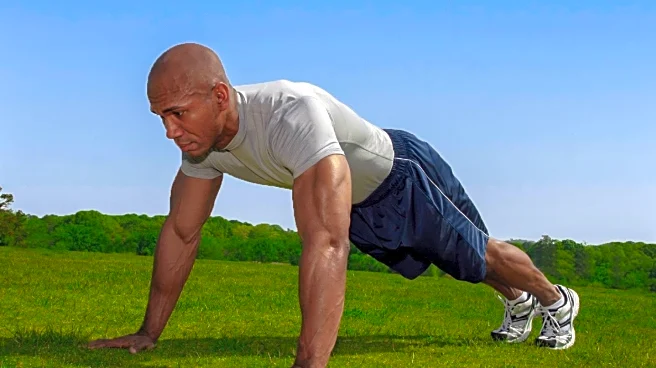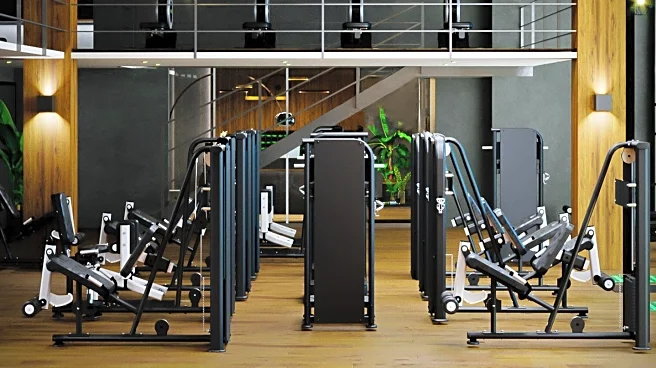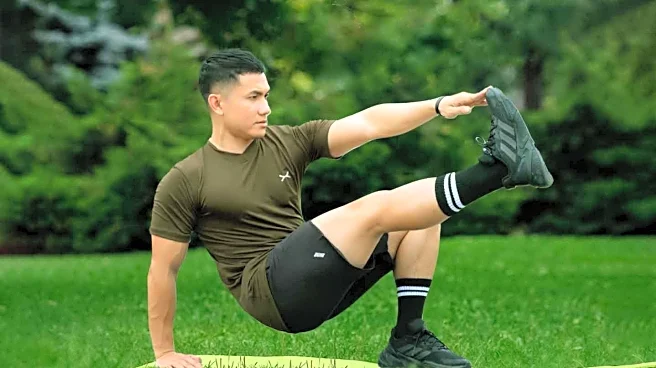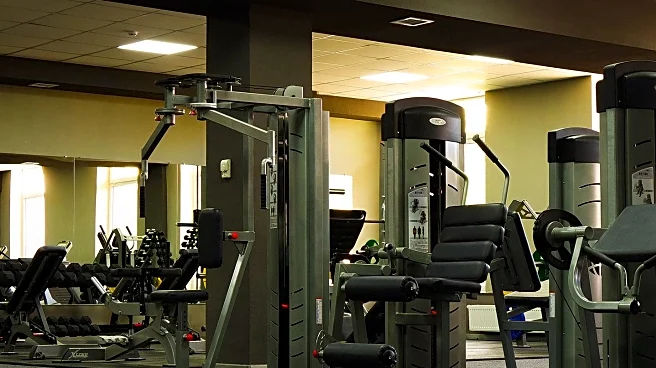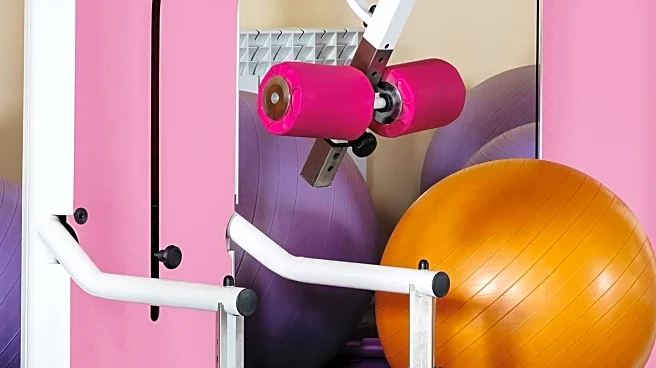What's Happening?
The bear hug squat is gaining attention for its ability to enhance both lower and upper body strength, as well as improve posture. This exercise involves holding a sandbag or medicine ball close to the
chest while performing a squat, which engages the quadriceps, glutes, hamstrings, and core muscles. Personal trainer Eryn Barber highlights the benefits of this exercise, noting its emphasis on grip strength and overall muscle development. Studies have shown that grip strength can be a significant indicator of long-term health and longevity, surpassing traditional measures like blood pressure. The bear hug squat also aids in maintaining an upright posture, which is crucial for proper squat technique and core engagement.
Why It's Important?
The bear hug squat offers a comprehensive workout that targets multiple muscle groups, making it an efficient exercise for those looking to improve their overall fitness. By focusing on grip strength, individuals can potentially enhance their long-term health outcomes, as research suggests a strong correlation between grip strength and longevity. This exercise also encourages proper form and posture, reducing the risk of injury and promoting effective muscle engagement. As fitness enthusiasts seek exercises that provide holistic benefits, the bear hug squat stands out as a valuable addition to any workout routine.
What's Next?
Fitness experts recommend incorporating bear hug squats into regular workout routines, aiming for 3-4 sets of 8-12 repetitions per week to build muscle and strength. Beginners are advised to start with lighter weights to master the form before progressing to heavier loads. As individuals become more comfortable with the exercise, they can increase the weight or add variations like pauses and slower tempos to challenge their muscles further. This progression ensures sustainable strength development and minimizes the risk of injury.
Beyond the Headlines
The bear hug squat not only contributes to physical health but also supports mental well-being by promoting self-discipline and focus during workouts. As individuals strive to maintain proper form and increase their strength, they may experience improved self-confidence and motivation. Additionally, the emphasis on grip strength and posture can have long-term benefits, potentially reducing the risk of age-related health issues and enhancing quality of life.


